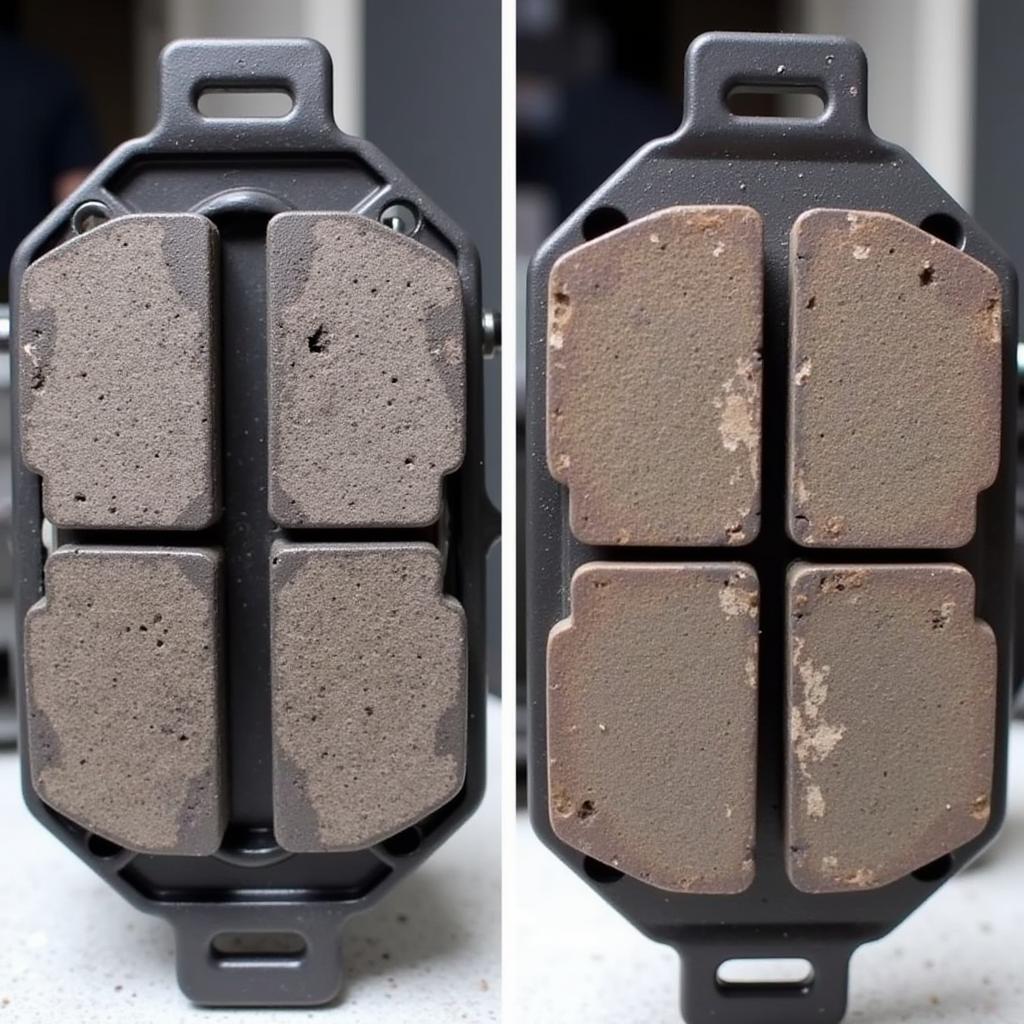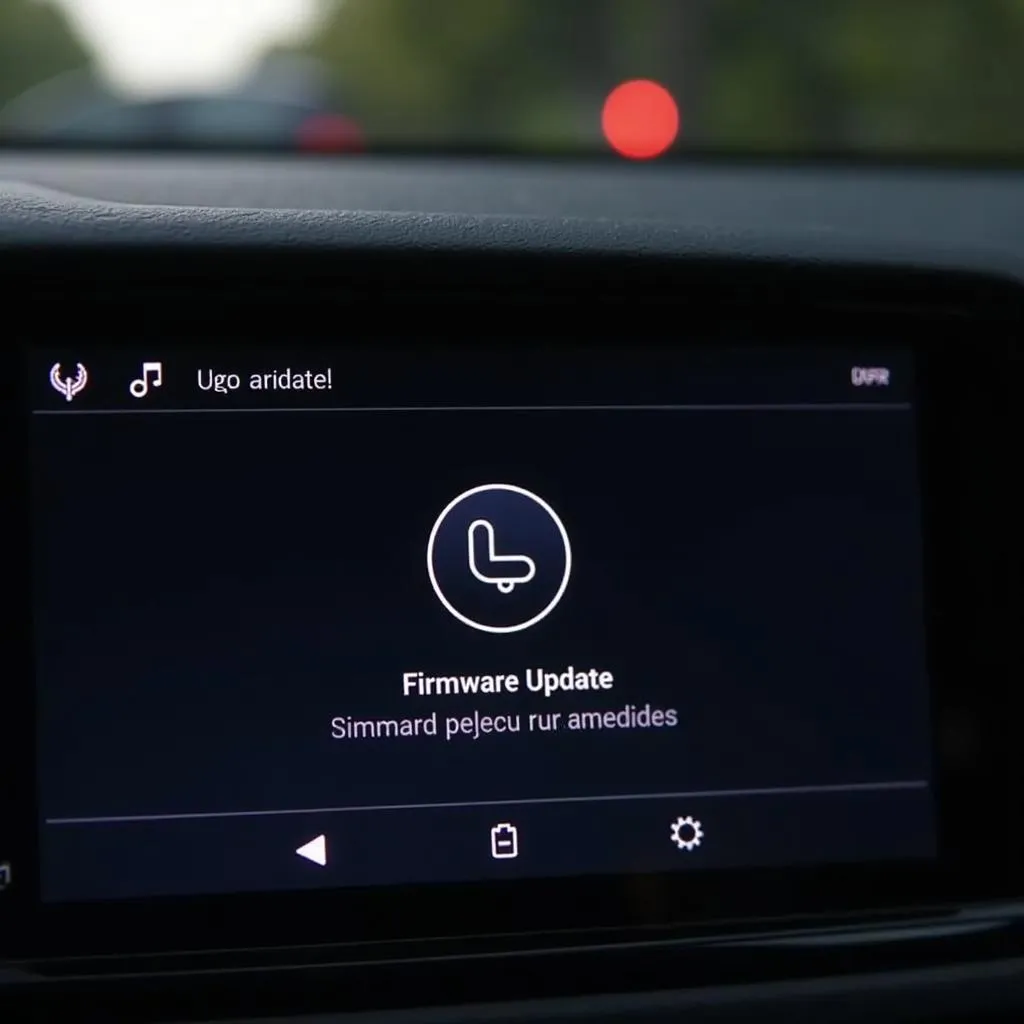The Ford Transit is a reliable workhorse, but even the toughest vans can experience issues. One common problem is the dreaded brake fluid warning light illuminating on your dashboard. This light signals a potential issue with your braking system, which should never be ignored. This comprehensive guide will delve into the common causes of the Ford Transit brake fluid warning light and provide practical solutions to help you get back on the road safely.
Understanding Your Ford Transit’s Brake System
Before we dive into the causes and solutions, it’s helpful to understand the basics of your Ford Transit’s brake system. The system relies on hydraulic pressure to activate the brakes when you press the pedal. Brake fluid, a crucial component of this system, transmits the hydraulic pressure from the master cylinder to the calipers or wheel cylinders, ultimately stopping the vehicle.
Common Causes of the Brake Fluid Warning Light
When the brake fluid warning light illuminates, it typically indicates one of the following issues:
1. Low Brake Fluid Level: This is the most common culprit. Brake fluid levels can decrease over time due to wear and tear on brake pads and other components. As brake pads wear down, the brake calipers need more fluid to function correctly, leading to a lower fluid level in the reservoir.
 Ford Transit Brake Fluid Reservoir
Ford Transit Brake Fluid Reservoir
2. Brake Fluid Leak: A leak anywhere within the brake system can result in a loss of pressure and trigger the warning light. Inspect the brake lines, hoses, calipers, and wheel cylinders for any signs of leaks, which may appear as wet spots or drips.
 Ford Transit Brake Fluid Leak
Ford Transit Brake Fluid Leak
3. Worn Brake Pads: While worn brake pads themselves don’t directly cause the warning light to come on, they are often associated with low brake fluid levels. As mentioned earlier, worn pads require more brake fluid to operate, leading to a drop in the reservoir level.
 Ford Transit Worn Brake Pads
Ford Transit Worn Brake Pads
4. Faulty Brake Master Cylinder: The brake master cylinder plays a vital role in pressurizing the brake system. If the master cylinder malfunctions, it can lead to a drop in brake fluid level and illuminate the warning light.
5. ABS Issue: While less common, a problem with the Anti-lock Braking System (ABS) can also trigger the brake fluid warning light. The ABS system uses sensors and a control module to prevent wheels from locking up during braking. If any of these components malfunction, it can affect the brake system’s pressure and illuminate the warning light.
What to Do When Your Ford Transit Brake Fluid Light Comes On
Safety First: If your brake fluid warning light comes on, it’s crucial to address the issue immediately. Driving with low brake fluid or a leak in your brake system is incredibly dangerous and can lead to brake failure.
“Ignoring a brake fluid warning light is like playing Russian roulette with your safety,” says John Davis, a certified automotive technician with over 20 years of experience. “It’s not worth the risk. Have your vehicle inspected by a qualified mechanic as soon as possible.”
Here’s what you should do:
- Safely pull over: As soon as it’s safe, pull over to the side of the road or a safe location.
- Check the brake fluid level: Carefully open the hood and locate the brake fluid reservoir. Check the fluid level. If it’s low, you may be able to temporarily address the issue by adding brake fluid.
- Add brake fluid (if necessary): Only add brake fluid if you feel comfortable doing so and have the proper type of DOT-rated brake fluid for your Ford Transit.
- Drive cautiously to a mechanic: Even after adding brake fluid, it’s essential to have your vehicle inspected by a qualified mechanic as soon as possible to diagnose and repair the underlying issue.
Can You Reset the Ford Transit Brake Fluid Warning Light?
While you can temporarily turn off the brake fluid warning light by addressing low fluid levels, resetting it completely usually requires using a diagnostic tool. The tool allows mechanics to access the vehicle’s computer system and reset the warning light after addressing the underlying issue.
For specific instructions on resetting the brake pad warning light on your Ford Transit model, you can refer to these resources:
- 2016 Ford Transit Brake Pad Warning Light Reset
- Ford Transit 2016 Brake Warning Light Reset
- Ford Transit 2018 Brake Pad Warning Light Reset
- Ford Transit 2017 Brake Pad Warning Light Reset
- 2010 Ford Transit Brake Pad Warning Light Reset
However, it’s crucial to remember that resetting the warning light without fixing the underlying problem is not a solution and can be dangerous.
Conclusion
The brake fluid warning light on your Ford Transit should never be ignored. Addressing the issue promptly and seeking professional help when needed can prevent accidents and keep you safe on the road. Regular maintenance, including brake inspections and fluid flushes, can also help prevent problems and extend the life of your braking system.

